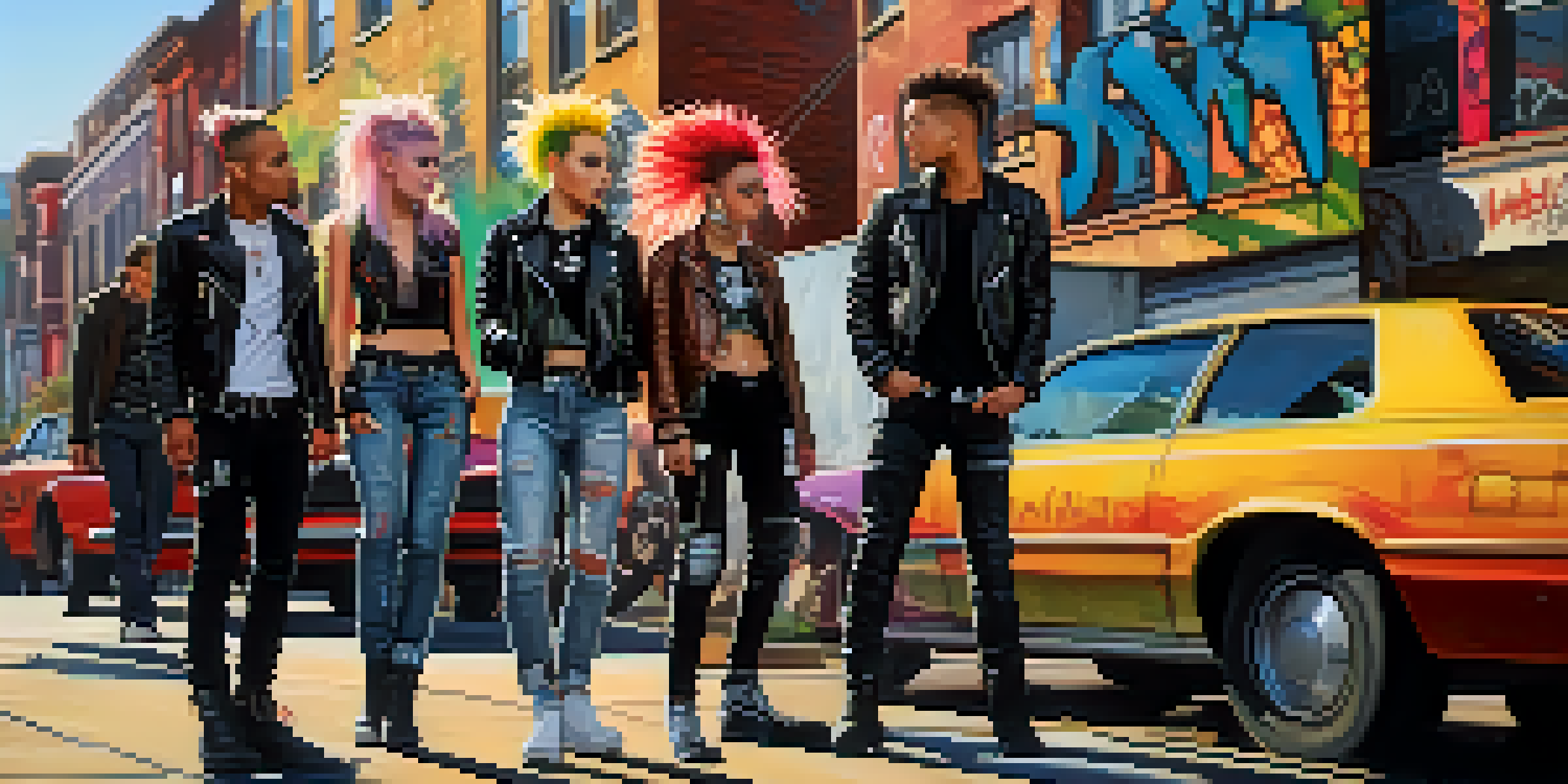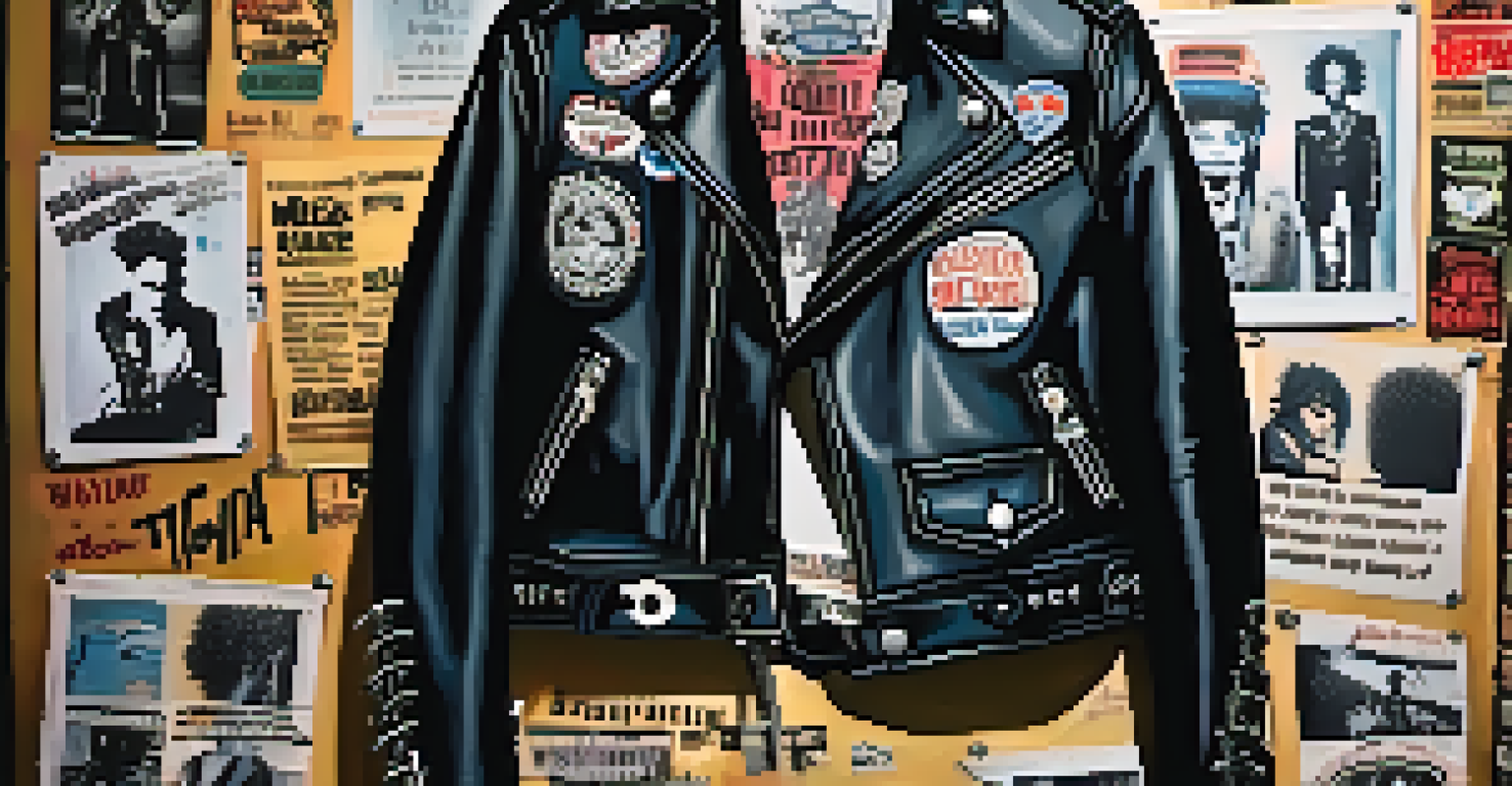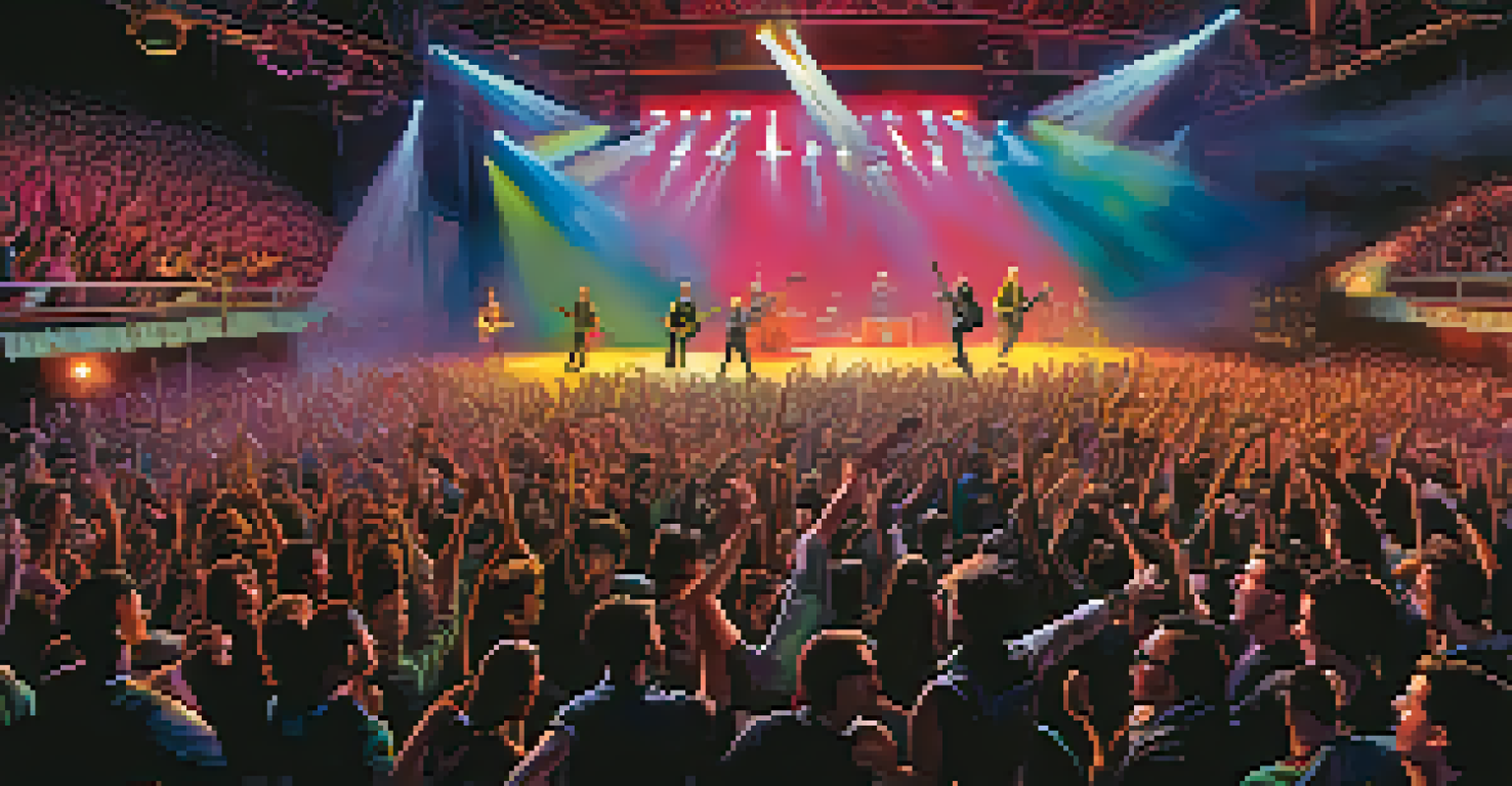How Punk Rock Shaped Fashion Trends in the 1970s and 1980s

The Birth of Punk Rock and Its Cultural Impact
Punk rock emerged in the mid-1970s as a raw, energetic music genre that challenged societal norms. Bands like the Ramones and the Sex Pistols not only disrupted the music scene but also introduced a distinct aesthetic that reflected their rebellious spirit. This cultural movement resonated with disaffected youth, creating a strong link between the music and fashion worlds.
Punk is not dead. Punk will only die when fashion fails to inspire.
The anti-establishment attitude of punk rock encouraged individuals to express themselves in bold, unconventional ways. It was about rejecting the polished looks of mainstream culture, with fashion becoming an extension of the music's message. Suddenly, clothing became a statement, a way for fans to align themselves with the punk ethos.
The influence of punk rock on fashion was not just a fleeting trend; it laid the foundation for various subcultures that followed. As punk spread, its aesthetic prompted a reevaluation of what fashion could be, sparking a wave of creativity and individuality that would shape the 1980s.
Iconic Punk Fashion Elements
Punk fashion is instantly recognizable, characterized by its DIY ethos and an eclectic mix of styles. Leather jackets, ripped jeans, and band t-shirts became staples, often adorned with safety pins, spikes, and patches. These items were more than just clothing; they symbolized a rejection of conformity and an embrace of personal expression.

Hair played a significant role in punk fashion, with vibrant colors and gravity-defying styles like mohawks becoming popular. This radical approach to grooming further emphasized individuality and defiance against societal expectations. Punk was about standing out, and hairstyles were a critical element of that message.
Punk Rock: A Cultural Revolution
Emerging in the mid-1970s, punk rock not only challenged music norms but also reshaped youth culture and fashion.
Accessories were equally important, with items like combat boots and chains completing the punk look. This rugged aesthetic was not just for show; it reflected the gritty realities of the urban landscape from which punk originated. Each fashion choice was a deliberate act of rebellion, creating a powerful visual identity.
Fashion Designers Inspired by Punk
As punk rock gained momentum, fashion designers began to draw inspiration from its bold aesthetic. Vivienne Westwood and Malcolm McLaren were among the first to fuse punk music with high fashion, creating collections that captured the spirit of the movement. Their designs included tartan patterns, safety pins, and exaggerated silhouettes, pushing boundaries in the fashion world.
The only way to deal with a world that doesn't want you is to create your own.
This crossover between punk and high fashion opened doors for other designers to explore unconventional styles. Designers like Jean Paul Gaultier and Rei Kawakubo incorporated elements of punk into their collections, showcasing how the movement transcended music to influence mainstream fashion. This blending of punk and haute couture created a new dialogue about the role of fashion in self-expression.
The impact of punk on fashion was undeniable, leading to a revolution in how clothing was perceived. It transformed the runway into a space for commentary and critique, encouraging designers to embrace the chaos and creativity that punk represented. This shift paved the way for future movements that would continue to challenge traditional fashion norms.
Punk's Influence on Youth Culture
Punk rock's influence extended beyond music and fashion into the very fabric of youth culture. It became a rallying cry for young people who felt marginalized or misunderstood, providing them with a sense of community and belonging. The fashion choices associated with punk created a visual language that resonated with those seeking to break free from societal constraints.
Punk fashion was often about accessibility; it encouraged young people to create their own looks using thrifted or repurposed items. This DIY approach not only made punk fashion affordable but also empowered individuals to express their unique identities. It was less about brand names and more about personal expression, making it relatable and attainable.
DIY Ethos in Punk Fashion
Punk fashion's do-it-yourself approach empowered individuals to express their uniqueness and reject conformity.
The punk ethos of rebellion and nonconformity inspired countless young people to challenge the status quo. This shift in mindset fostered a generation that valued authenticity and creativity, influencing various aspects of culture, from art to literature. Punk rock had become more than just a music genre; it was a lifestyle that shaped an entire generation.
The Evolution of Punk Fashion in the 1980s
As punk rock evolved into the 1980s, so did its fashion. The initial rawness of the 70s gave way to a more polished, yet still edgy, aesthetic. Bands like The Clash and Blondie brought punk into the mainstream, and with that transition came a diversification of styles, incorporating elements from other genres like new wave and goth.
This era saw the rise of subgenres within punk, each with its unique fashion statements. For instance, the '80s goth scene embraced darker colors and romantic silhouettes, while new wave incorporated bright colors and playful patterns. These variations showcased the adaptability of punk fashion and its ability to inspire new trends.
Despite these shifts, the core principles of punk remained intact. The emphasis on individuality and self-expression was still at the forefront, encouraging people to mix and match styles to create something uniquely their own. Punk fashion continued to challenge norms, proving that rebellion could evolve while still staying true to its roots.
Punk Fashion's Legacy in Contemporary Style
The influence of punk fashion has persisted well into the 21st century, impacting contemporary designers and trends. Many current fashion houses draw inspiration from punk's rebellious spirit, integrating elements like leather, studs, and graphic tees into their collections. This fusion keeps the punk ethos alive, showing that its message is still relevant today.
Streetwear, a dominant trend in modern fashion, incorporates the DIY and unrefined aesthetics that punk championed. Brands like Supreme and Off-White embrace the individuality that punk fashion espoused, creating a new generation of fans who value authenticity and self-expression. The punk influence is evident in the way people dress, blending comfort with attitude.
Punk's Lasting Influence on Fashion
The legacy of punk fashion continues to inspire contemporary styles and cultural movements focused on authenticity and social change.
Moreover, punk's impact can be seen in various cultural movements advocating for social change. Just as punk challenged societal norms in the 70s and 80s, today's fashion often serves as a platform for activism. The legacy of punk fashion is not just about clothing; it's about using style as a form of expression and a tool for change.
Conclusion: The Enduring Spirit of Punk Fashion
Punk rock and its fashion revolution have left an indelible mark on culture that continues to resonate today. The movement's emphasis on individuality, creativity, and rebellion has inspired countless generations to express themselves authentically. Punk fashion was not merely about the clothes; it was a powerful statement against conformity and a celebration of diversity.
As we reflect on the evolution of punk fashion from the 1970s to the present, it's clear that its influence transcends music genres and cultural movements. The bold styles that emerged during this time are now part of the broader fashion landscape, reminding us of the power of self-expression. The spirit of punk lives on in those who dare to be different.

In a world where trends come and go, the enduring legacy of punk fashion serves as a reminder that true style is about authenticity. As we embrace our unique identities, we honor the pioneers who paved the way for self-expression through fashion. Punk rock will always be a symbol of rebellion, creativity, and the freedom to be oneself.